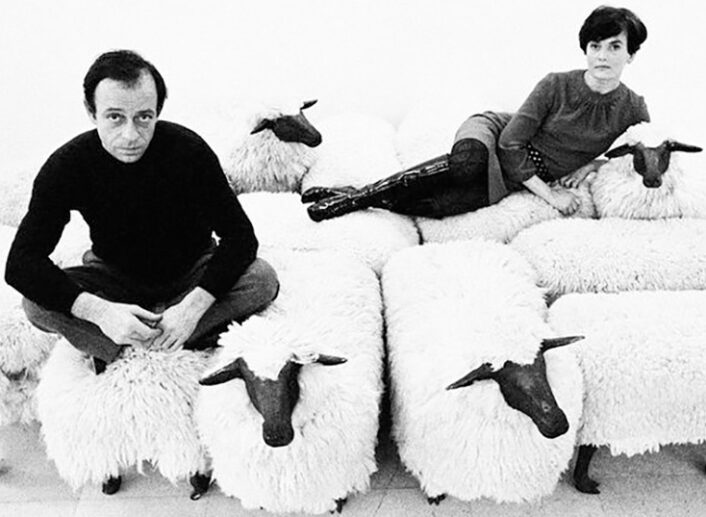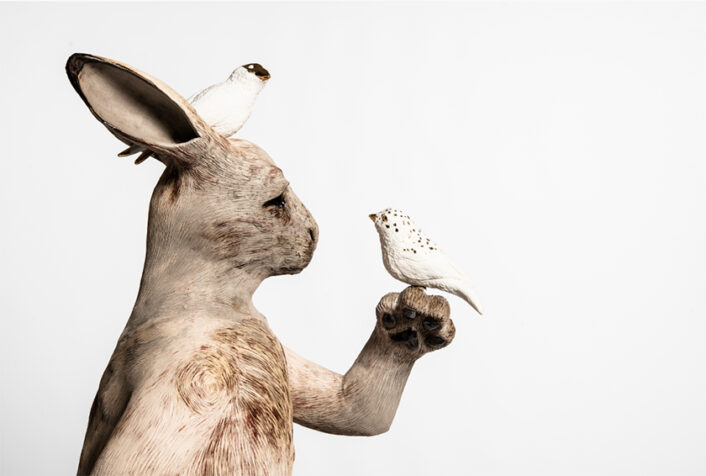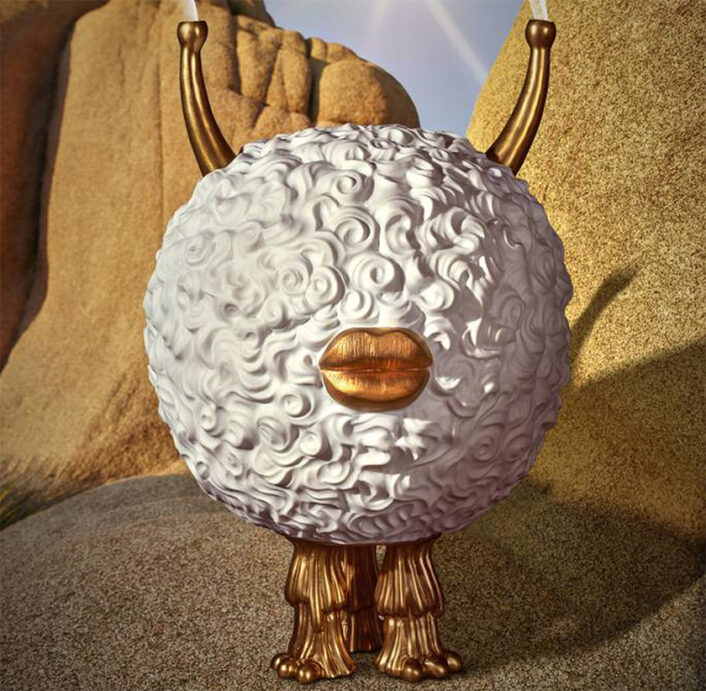Design
Kim Simonsson’s Moss People
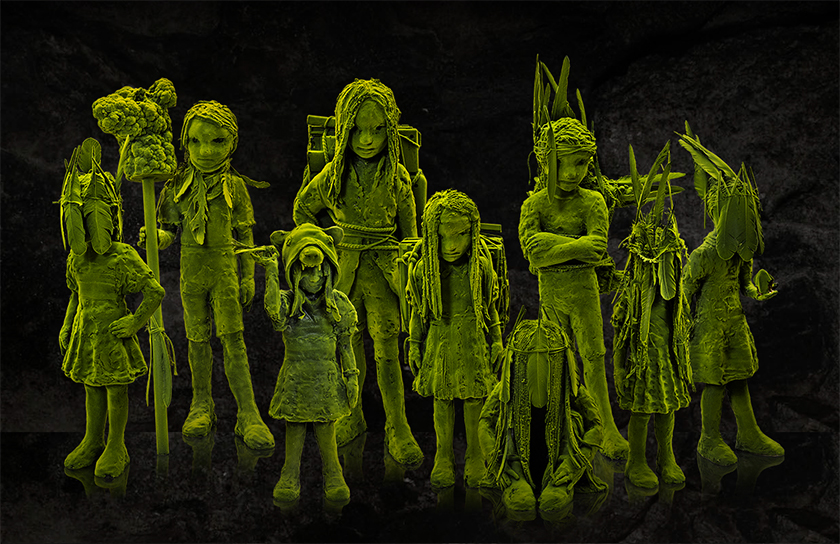
A group of Moss People.
Image courtesy of: Kim Simonsson
For the Finnish artist Kim Simonsson, Nordic fairytales and folklore have been a source of constant inspiration. Best known for his Moss People, Simonsson’s green, human-like figures are both eerie and enlightening. Certainly, the sculptures are distinctive… all share an appearance that is a bit lonely and sad.
In addition, Simonsson also draws inspiration from pop culture such as magna culture and video games, and his country’s youth. The sculptures all appear to be young; they carry backpacks and have feathers in their hair. Some Moss People also tote around books or radios… as though on a mission to get somewhere.
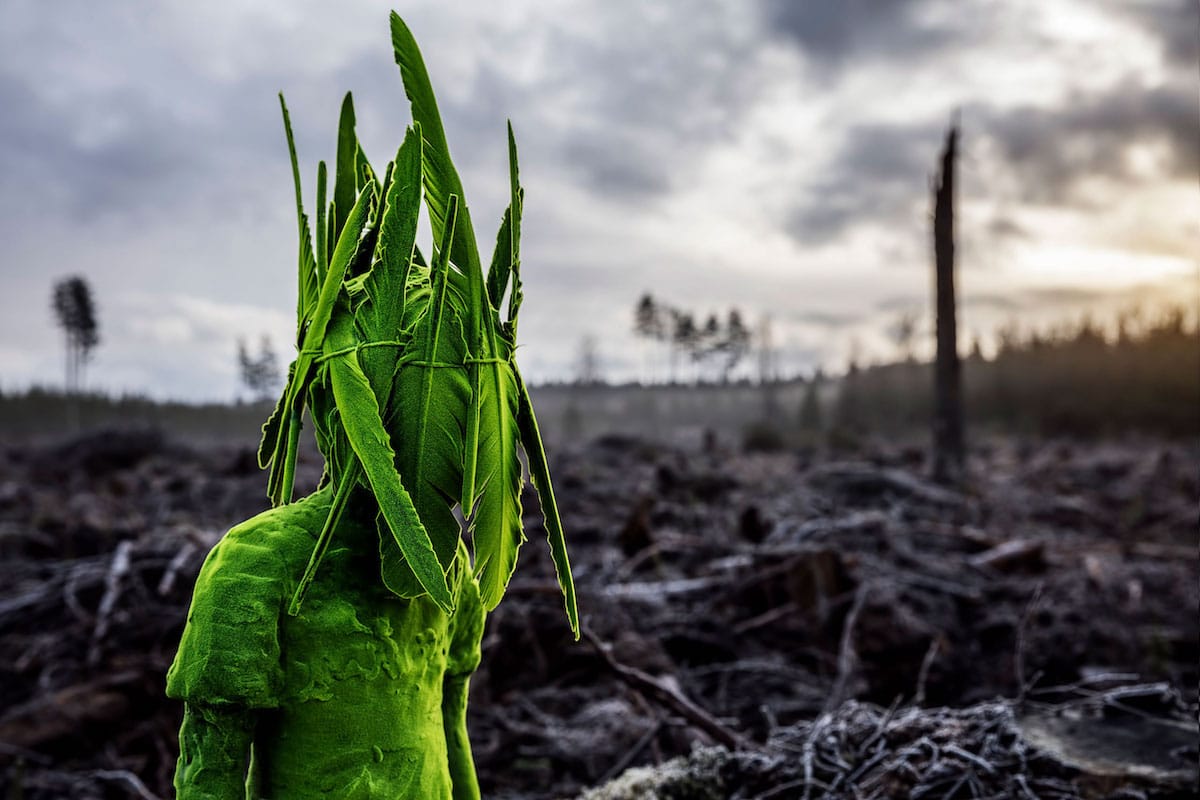
“Mossgirl with Feathers,” 2016. Made from ceramics, nylon fiber, epoxy resin, feathers, and rope.
Image courtesy of: My Modern Met, photographed by: Jefunne Gimpel
The sculptures are made out of diverse materials; interestingly, they were created out of an experiment Simonsson conducted years ago. When he initially began making these sculptures, they were layered only with a velvety black coating. One day, he decided to flock a figure with yellow… the crushed nylon fiber was applied over the black, and it turned green. Today, the large-scale sculptures are coated with flocking, a process that involves applying fine fiber to an object’s surface.
The hand-built stoneware sculptures are painted and then flocked with nylon fiber; this process makes the sculptures look as though they are covered in moss. Thus, the appropriate title of Moss People; however Simonsson admits that it took him a little while to realize that this specific green resembled moss and that his sculptures are essentially forest creatures.
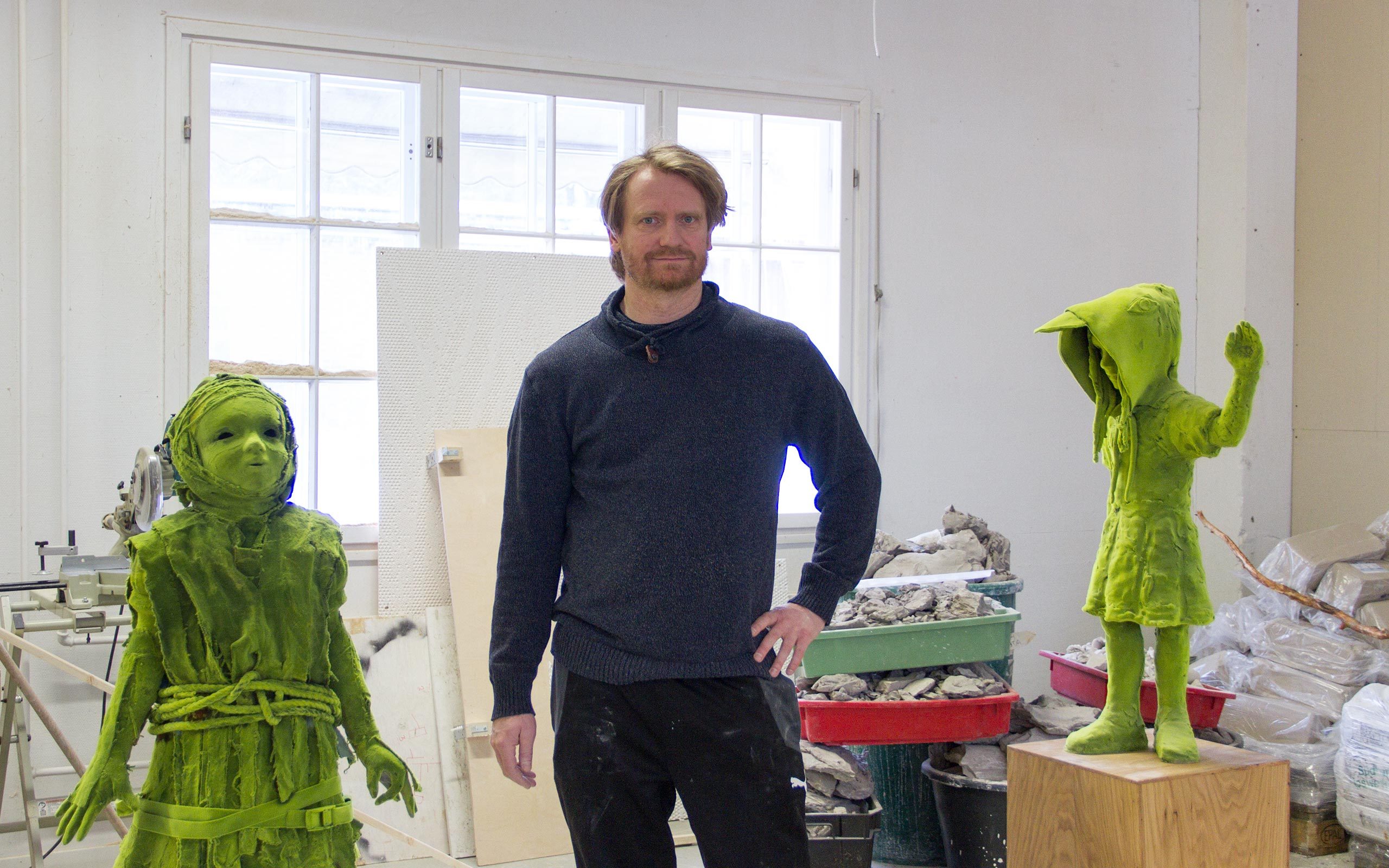
Simonsson with his crew…
Image courtesy of: Collectors Agenda, photographed by: Jefunne Gimpel
The figures usually appear confident, with edible plants, oftentimes cabbage, growing out of their limbs, feet, and torsos. In addition to offering protection, the vegetation also ensures that the figures are entire self-sustaining beings… producing and transporting their own food.
The reason behind the figures’ young age is that for them, everything is still possible. These young, prepubescent creatures, are clearly carefree and devoid of adult responsibilities. About the specific age frame, Simonsson told Collectors Agenda “When creating them I had an apocalyptic moment in mind, a horrible disastrous event in mankind, after which only children before puberty age survived. These kids needed to become strong and self-reliant as nobody could look after them anymore. In my mind these kids are on their own and have to survive.”

“Jeanne D’Arc,” 2021. Made of stoneware, nylon fibers, found objects, and epoxy.
Image courtesy of: Design Miami
All of the sculptures are made in Simonsson’s Fiskars Village studio in Finland. The small town of roughly 600 inhabitants is interesting because more than one third of the inhabitants work in the creative industry. Interestingly, Fiskars Village was previously the production site for the Fiskars, the company well-known for making scissors. Due to the factory, the town previously had a population of thousands of people; however moving the production site elsewhere meant that the town lost many community members. Luckily, the company realized the importance and their responsibility in helping to revive the village and they offered carpenters and designers the opportunity to set up workshops in an old factory building.
In particular, Simonsson’s work space is located in a brick building inside a compound which previously served as Fiskar’s factory shop floor. As for the specifics, the sculptures are made out of clay in the Fiskars studio; then, they are fired in his workshop in Helsinki.

“Nomadic Mossboy With Boombox,” 2016.
Image courtesy of: Collectors Agenda, photographed by: Jefunne Gimpel
Simonsson discovered his ability to sculpt as a young child… his first creation was carving Donald Duck in the snow (while his friends rolled snowmen). The artist is clear that he does not want his art to appear as though he is preaching to people through his work. The artist never offers much information on his figures; rather, he believes that is up to his audience to uncover what is underneath.
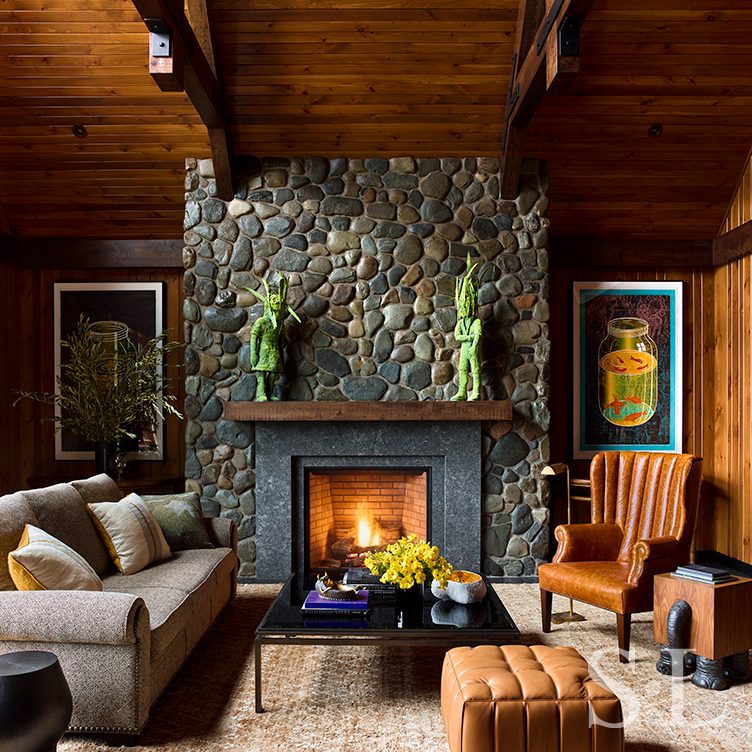
Voodoo Moss Girl & Boy, 2015, grace the fireplace mantel in our Lakeside Residence – a perfect rustic backdrop for these distinctive sculptures!
Photo by Eric Piasecki
When Moss People first arrived, some people categorized them as “scary;” however that has evolved to people realizing that the sculptures are simply “different” than anything they have seen before. Simonsson said, “What I am trying to do in my art is to create something that is of an informal sublime beauty – something that admits also coincidence and unintentional developments in its creation process. Once I feel I have reached that stage I stop working. I want to make work that is honest and true to my way of expressing myself.”
